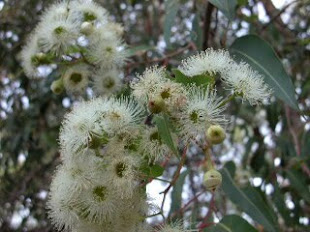skip to main |
skip to sidebar
 Here's a strange little insect that I've only just come across recently, and goes by the name of Bird of Paradise Fly. However, it's not a fly at all. The male has two shiny wings, long antennae like a moth, and long silky hairs projecting from the end of the abdomen. My bushwalking buddy David found this little animal sunning himself on top of a shrub in Bush Forever Site 300 (north of Charlotte's Vineyard). It seemed quite active, and wary of our cameras.
Here's a strange little insect that I've only just come across recently, and goes by the name of Bird of Paradise Fly. However, it's not a fly at all. The male has two shiny wings, long antennae like a moth, and long silky hairs projecting from the end of the abdomen. My bushwalking buddy David found this little animal sunning himself on top of a shrub in Bush Forever Site 300 (north of Charlotte's Vineyard). It seemed quite active, and wary of our cameras.
That shiny train does remind me of the extravagant tails and adornment feathers of the Birds of Paradise of New Guinea.
Then we later found this big fat leathery creature clinging to a banksia tree. With its plump hairless body, it looks a bit like an engorged tick, or a wingless cockroach. It is the most unlikely looking insect I've seen for a while. What is it? You might be surprised to hear that it's the female Bird of Paradise Fly. She's a lot bigger than the male, moves slowly, and doesn't appear to be concerned about paparazzi.
You might be surprised to hear that it's the female Bird of Paradise Fly. She's a lot bigger than the male, moves slowly, and doesn't appear to be concerned about paparazzi.
When the adult male and female of a species are really different from each other, scientists call that "sexual dimorphism". I find it amazing that these two are still attracted to each other after all these millenia, enough to continue their species. Bird of Paradise Flies belong to the Margarodidae family, along with mayflies. The genus is called Callipappus. The species in the photos above has the common name "Silver Phoenix". (Click on the link for more information.)
Here's a link to a species in Brisbane with the common name "Violet Phoenix".
Every time I go out in our local bushland, something new pops up!
Recently I attended the 2009 Dieback Information Group Conference - what an eye-opener for people living in Perth! Did you know that Dieback is caused by a microscopic organism called Phytophthora cinnamomi? This rampant and aggressive little beast has caused severe damage to thousands of hectares of bushland in WA. Unfortunately, a lot of bushland had been damaged before Dieback was properly identified. Dieback kills many species of trees and shrubs. Plants that are susceptible include banksias, grasstrees, jarrah, she-oaks and hibbertias. Dieback is commonly spread by movement of infested soil by vehicles, but can also hitch a lift in gravel or mulch. But it's not just a bushland problem... many exotic plants (including avocado, oak, pines, roses, camellia, azalea, grapes, apricot, peach and macadamia) are also susceptible. That means that orchards, nurseries and private gardens are potentially at risk. Since there's no cure, the best approach is PREVENTION. Many bushland areas now have signage showing infested and non-infested areas. There are hygiene protocols to stop the spread of Dieback, such as not going into infested areas, and cleaning boots and vehicle tyres/chassis after using bush tracks. If you think you've been walking in an area that has Dieback, clean the soles of your boots with metho when you are leaving the area. Then you won't take the disease home to your garden.
I would add - be very wary of bringing home infested soil, gravel, mulch or plants for your garden. Please note that some nurseries or garden suppliers may not be checking their stuff to see if they have Dieback. You might be bringing home a heart-breaking problem. Sadly, some natural heritage areas of WA have been damaged beyond repair by Dieback. The good news though - not all plants are susceptible. And if we all work together, we can halt the devastation.If you want to find out more about Dieback, please have a look at the Global Invasive Species Database, and WA's Dieback Working Group website.
 Here's a strange little insect that I've only just come across recently, and goes by the name of Bird of Paradise Fly. However, it's not a fly at all. The male has two shiny wings, long antennae like a moth, and long silky hairs projecting from the end of the abdomen. My bushwalking buddy David found this little animal sunning himself on top of a shrub in Bush Forever Site 300 (north of Charlotte's Vineyard). It seemed quite active, and wary of our cameras.
Here's a strange little insect that I've only just come across recently, and goes by the name of Bird of Paradise Fly. However, it's not a fly at all. The male has two shiny wings, long antennae like a moth, and long silky hairs projecting from the end of the abdomen. My bushwalking buddy David found this little animal sunning himself on top of a shrub in Bush Forever Site 300 (north of Charlotte's Vineyard). It seemed quite active, and wary of our cameras.
